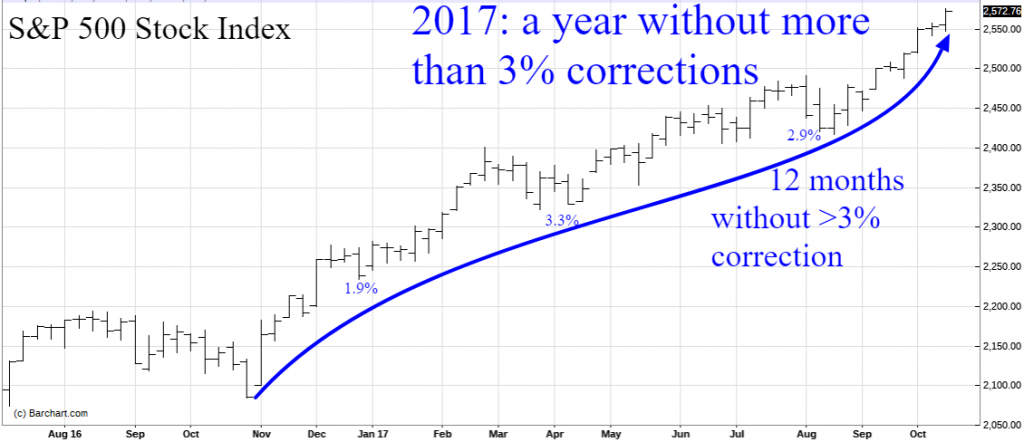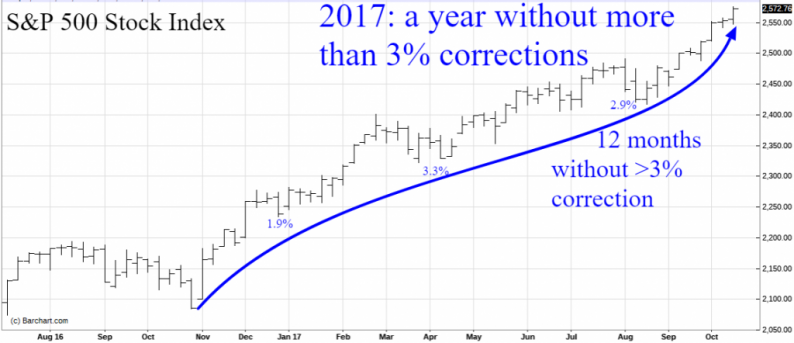How rare is a year without corrections of more than 3%? 1995 was the last period of incredibly persistent optimism without a hiccup in price to afford a paltry decline beyond 3%. Most consider a pullback of 5 to 10% to be modest and a normal expectation at least once a year. A 3% drop is hardly more than a blink of an eye in a Bull market. For the past 12 months, we have not teased the bare minimum 5% drop in the stock market to give investors a chance to climb aboard this runaway train powered by earnings and increasing economic optimism.

No correction for 12 straight months is impressive, but in 1995 stocks ran higher for 15 months without exceeding a 3% correction before scaring traders with a 3-week plunge of over 11% intraday. A similar replay of 1995 would keep the buying frenzy going until about January 2018 before a “real” correction begins.

Non-stop rallies in the stock market without a normal correction pushes volatility (VIX) premiums lower. In 1995 Volatility remained depressed all year at which point the persistent uptrend in stocks slowed and deeper pullbacks began.

Like 1995, the VIX has also stayed down throughout 2017 reaching historic low volatility readings this month. Each time the VIX is at low tide and we move beyond the peak quarterly earnings release (10/24 – 11/09/17) the risk of volatility spikes and meaningful stock market corrections rise.

The classic Exchange Traded Fund (ETF) that has been increasingly utilized to profit from this record-setting depression in the VIX is its inverse, symbol XIV. When the stock market blasted off on election day last November we often said that there could not be a serious correction until prices had moved far enough above the S&P 2200 breakout level so that any price drop didn’t damage the new up cycle. The . While the S&P 500 Index has gained almost 15% this year, the volatility loving XIV has risen almost 130% (over 650% since 02/2016). It’s far too late to invest in the XIV, although the futures premium decay gives it a favorable longer-term bias “after” price corrections compared to the VIX (VXX) which appreciates “while” prices are falling.

















Leave A Comment